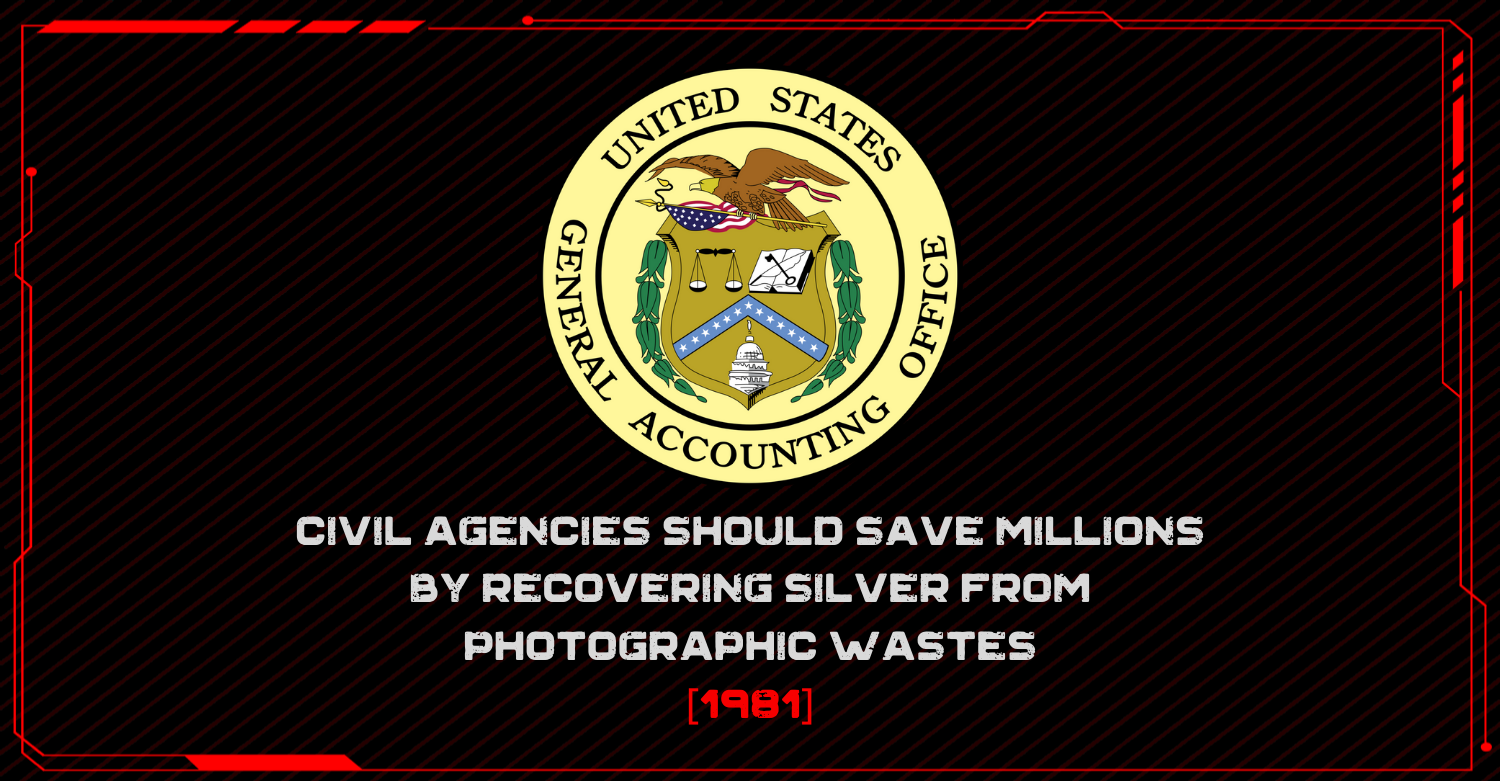
Summary:
The July 31, 1981 GAO report (PLRD-81-48) finds that many U.S. civil agencies were dumping silver-laden photographic wastes instead of recovering the metal, forfeiting large savings and risking environmental harm. Recovery is straightforward and highly cost-effective: the Veterans Administration recovered $13.7M of silver in 1980 at ~$185K cost (≈$74 returned per $1 spent). DOD, meanwhile, raised recovered photographic silver from ~200,000 oz (1976) to ~300,000 oz (1980), with market value gains outpacing costs.
GAO attributes weak civil-agency performance to poor incentives (sale proceeds typically returned to Treasury), limited management emphasis, low staff awareness, and uneven GSA support/authority. In a 44-lab sample, only 12 recovered effectively; 19 did not recover at all—dumping an estimated ~6,500 oz/year. Internal controls were often lax: missing inventories, unsecured equipment, slow shipments, and improper offsetting of proceeds against service contracts.
GAO recommends GSA clarify regulations to make recovery mandatory in all government photo labs; agency heads should educate managers, require periodic internal audits, and—where cost-effective—join DOD’s Precious Metals Recovery Program, which offers surveys, training, equipment, turn-in points, and the ability to use reclaimed silver as Government-furnished material. DOD should take steps to accommodate additional civil agencies. Expected benefits: conserve a valuable resource, reduce imports, prevent pollution, and save millions.

